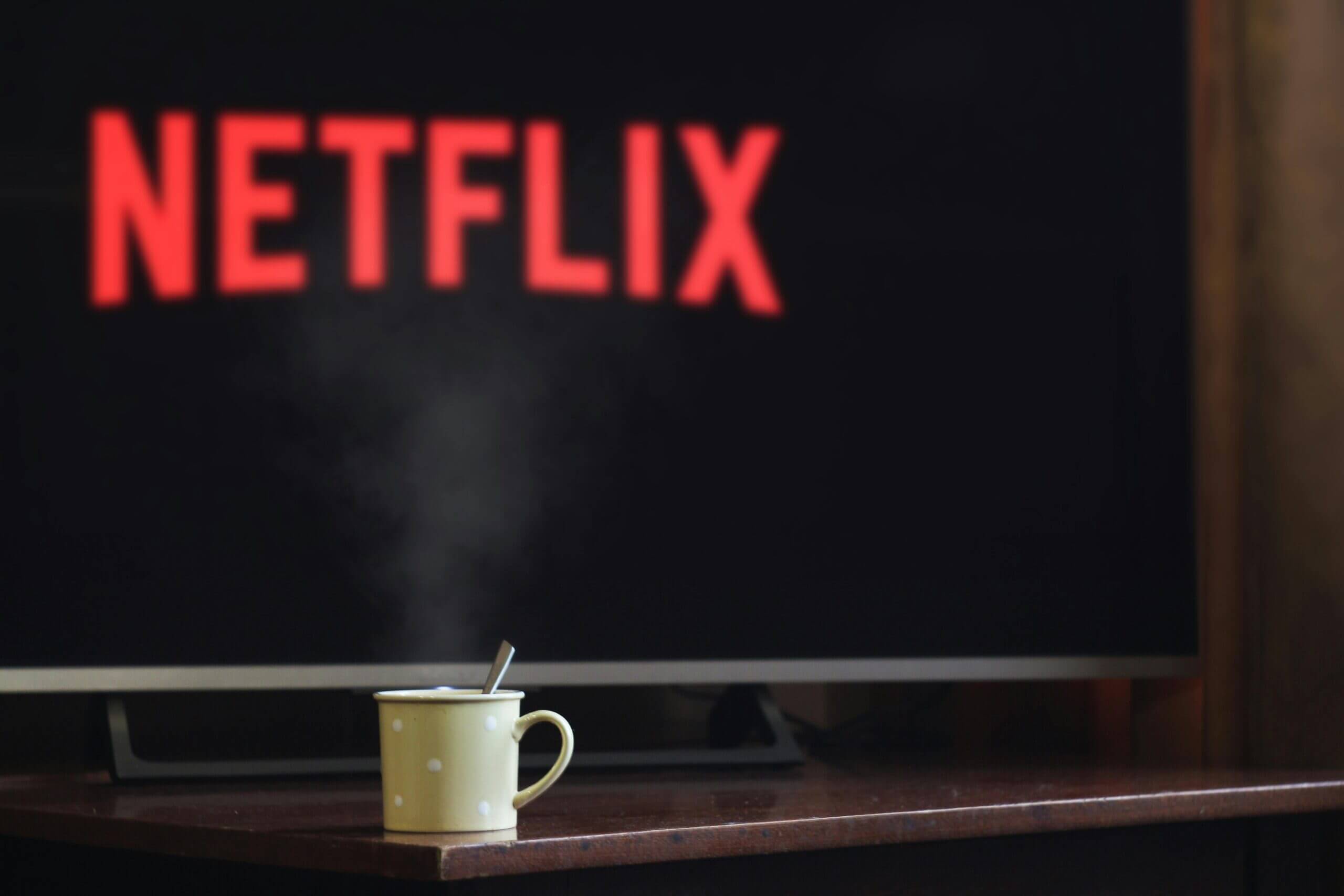"The Evolution of Streaming Services: How Netflix, Disney+, and Others are Changing TV"
As you scroll through your TV options, you’ve likely noticed a seismic shift in the way you consume entertainment. Gone are the days of rigid broadcast schedules and limited channel choices. The rise of streaming services has revolutionized the television landscape, offering unparalleled flexibility and access to a vast library of content. From Netflix’s pioneering efforts to Disney+’s recent entry into the fray, you’re now spoiled for choice. But have you ever stopped to think about how these services have evolved over time, and what it means for the future of TV as you know it?
Key Takeaways:
- Bundling and Unbundling: The streaming services market is experiencing a shift from bundling (offering a wide range of content at a low price) to unbundling (offering niche content at a premium price). This change is driven by consumer preferences for targeted content and the increasing cost of producing high-quality original content.
- Niche Content and Targeted Audiences: Streaming services are focusing on creating niche content that appeals to specific audiences, rather than trying to cater to a broad audience. This approach allows them to attract and retain subscribers who are passionate about specific genres or topics, such as Disney+ with its focus on family-friendly content and Marvel fans.
- Original Content and Competition: The rise of streaming services has led to an increase in original content production, which has become a key differentiator for platforms. The competition for talent, resources, and audience attention is driving up production costs, and only services with deep pockets and a clear strategy will be able to sustain themselves in the long term.

The Early Days of Streaming
As you explore the world of streaming services, it’s necessary to understand how they came to be. The evolution of streaming is a fascinating story that spans over two decades, and it’s crucial to start at the beginning.
Birth of Netflix
With the dawn of the new millennium, Reed Hastings and Marc Randolph founded Netflix in 1997. Initially, the company focused on providing a subscription-based service that allowed users to rent DVDs by mail. This innovative approach revolutionized the home entertainment industry, offering customers a convenient alternative to traditional video rental stores.
First Online Platforms
Streaming media began to take shape in the early 2000s. RealNetworks launched RealPlayer in 1995, allowing users to stream audio and video content online. This pioneering effort paved the way for other platforms to emerge.
First online platforms like YouTube (founded in 2005) and Hulu (founded in 2006) further transformed the streaming landscape. These services enabled users to access a vast library of content, including music videos, TV shows, and movies, directly from their computers. As broadband internet became more widespread, the quality and availability of streaming content improved, setting the stage for the modern streaming services you know today.
Rise of Competition
Some of the most significant changes in the streaming landscape have come from the rise of new competitors. As you’ll recall, Netflix was once the only game in town, but that’s no longer the case. Today, you have a plethora of options to choose from, each with their own unique strengths and weaknesses.
Hulu and Amazon Prime
To challenge Netflix’s dominance, Hulu and Amazon Prime stepped up their game. Both services expanded their content offerings, investing heavily in original programming and securing lucrative licensing deals. As a result, you now have access to a wider range of TV shows and movies than ever before.
New Entrants in Market
Prime among these new entrants are services like Apple TV+, HBO Max, and Peacock. These newcomers bring fresh perspectives and deep pockets to the table, further fragmenting the market and giving you even more choices.
Market dynamics have shifted dramatically with the arrival of these new players. You’re no longer limited to just Netflix or Hulu; you can now pick and choose from a diverse range of services that cater to specific interests and preferences. This increased competition has led to a surge in innovation, with each service trying to outdo the others in terms of content quality, user experience, and pricing. As a consumer, you’re the ultimate winner in this battle for supremacy.
Shift to Original Content
Many streaming services have shifted their focus from licensing existing content to producing original content. This shift has enabled them to differentiate themselves from traditional TV and attract new subscribers. By investing heavily in original content, streaming services can offer unique programming that can’t be found anywhere else, making them more appealing to viewers like you.
Netflix’s House of Cards
You might recall the buzz surrounding Netflix’s debut of House of Cards in 2013. This critically acclaimed series marked a turning point for Netflix, as it was the first original series produced exclusively for the platform. Its success paved the way for more original content, cementing Netflix’s position as a major player in the streaming industry.
Disney+’s The Mandalorian
Cards were played when Disney+ launched its flagship series, The Mandalorian, in 2019. This live-action Star Wars series quickly became a cultural phenomenon, drawing in millions of viewers and solidifying Disney+’s position in the streaming market.
With its impressive production values and engaging storyline, The Mandalorian has set a new standard for original content on streaming services. By leveraging the popularity of the Star Wars franchise, Disney+ has been able to attract a broad audience and create a loyal fan base. As you explore the world of streaming services, you’ll likely notice more emphasis on original content like The Mandalorian, which is redefining the way we consume entertainment.
Expansion and Globalization
Once again, the streaming services landscape has undergone a significant transformation, this time with a focus on expansion and globalization. The major players have set their sights on conquering the world, and you’re reaping the benefits.
Streaming Goes Worldwide
The rise of streaming services has led to a global phenomenon, with platforms like Netflix, Disney+, and Amazon Prime expanding their reach to almost every corner of the globe. You can now access your favorite shows and movies from anywhere, at any time, thanks to the widespread availability of these services.
Localized Content Strategies
Worldwide streaming services have recognized the importance of catering to local tastes and preferences. They’ve developed strategies to produce content that resonates with diverse audiences, ensuring that their offerings are relevant and appealing to viewers from different cultural backgrounds.
It’s fascinating to see how streaming services are adapting to local markets by investing in original content produced in various languages and tailored to specific regions. For instance, Netflix has produced hit shows like “Narcos” in Spanish, “Sacred Games” in Hindi, and “Crash Landing on You” in Korean, demonstrating its commitment to providing content that speaks to diverse audiences. This approach has not only helped streaming services gain traction in new markets but also enabled them to build a loyal fan base worldwide.
Battle for Market Share
Many streaming services have entered the market, each vying for a piece of the pie. The competition is fierce, with each platform trying to outdo the others in terms of content, pricing, and user experience. As a result, the battle for market share has become a key aspect of the streaming wars.
Price Wars and Promotions
The cost of subscription has become a major differentiator for streaming services. The likes of Netflix, Disney+, and Apple TV+ have been engaging in price wars, with each platform trying to undercut the others. You’ve likely seen promotions and discounts being offered to new subscribers, as well as loyalty rewards for long-time customers.
Exclusive Content Deals
If you’re a fan of a particular TV show or movie franchise, you may find that it’s only available on one specific streaming platform. This is because many services are investing heavily in exclusive content deals, which give them the rights to popular titles and original content.
You can think of exclusive content deals as a way for streaming services to differentiate themselves from the competition. By offering unique and high-quality content that can’t be found elsewhere, platforms like Netflix and Disney+ are able to attract and retain subscribers. For example, Disney+ has exclusive rights to Marvel and Star Wars content, while Netflix has produced original hits like “Stranger Things” and “The Crown”. These deals are a key factor in the battle for market share, as they give subscribers a compelling reason to choose one platform over another.

Impact on Traditional TV
Many experts predicted that the rise of streaming services would mark the end of traditional TV as we know it. And while that might be an exaggeration, it’s undeniable that streaming has had a significant impact on the way you consume television.
Cord-Cutting and Decline
To put it simply, traditional TV viewing has been on the decline. More and more people are cutting the cord, opting for streaming services over traditional cable or satellite TV. This shift has led to a decline in ratings and ad revenue for traditional TV networks.
New Business Models Emerging
On the other hand, the rise of streaming has also led to new business models emerging. Traditional TV networks are now experimenting with their own streaming services, offering exclusive content to attract subscribers.
Traditional TV networks are having to adapt to this new landscape, finding ways to offer their content in a way that appeals to your changing viewing habits. This means offering more flexible subscription options, exclusive content, and even partnering with streaming services to reach a wider audience. As a result, you’re seeing new business models emerge, such as hybrid models that combine traditional TV with streaming services.
Technological Advancements
All streaming services have invested heavily in technological advancements to improve your viewing experience and stay ahead of the competition.
4K and HDR Streaming
On the visual front, many streaming services now offer 4K and HDR (High Dynamic Range) streaming, providing you with a more immersive and cinematic experience. With 4K, you get a much higher resolution than traditional HD, while HDR offers better contrast and color accuracy, making your favorite shows and movies look more lifelike.
Artificial Intelligence Integration
Artificial intelligence (AI) has become a crucial component in the evolution of streaming services, enabling them to better understand your viewing habits and preferences.
This AI-driven personalization allows streaming services to offer you tailored content recommendations, ensuring that you discover new shows and movies that align with your interests. For instance, Netflix’s AI-powered algorithm analyzes your viewing history and search queries to suggest content that you’re likely to enjoy. This level of personalization has become a key differentiator for streaming services, setting them apart from traditional TV providers.
Personalization and Discovery
Once again, streaming services have revolutionized the way you consume television by introducing personalized experiences tailored to your unique preferences. This shift has transformed the way you discover new content, making it easier than ever to find your next favorite show or movie.
Algorithm-Driven Recommendations
Adeptly, algorithms have become the backbone of streaming services’ recommendation engines. By analyzing your viewing history, search queries, and ratings, these algorithms provide you with a curated list of content that aligns with your interests. This has not only increased user engagement but also reduced the time spent browsing through endless options.
User Interface Innovations
Assuming you’ve used a streaming service, you’re familiar with the intuitive interfaces designed to facilitate discovery. Features like carousels, categories, and search bars have become standard, making it effortless to find something that suits your mood.
User experience has been at the forefront of innovation, with services continually refining their interfaces to better cater to your needs. For instance, Netflix’s “Max” feature allows you to customize your homepage, prioritizing the types of content you want to see. Similarly, Disney+’s “Discover” page uses machine learning to suggest titles based on your viewing habits. These advancements have significantly enhanced your ability to discover new content, ensuring that you’re always just a click away from your next binge-watching session.
Monetization Strategies
For streaming services to thrive, they need to adopt effective monetization strategies that appeal to their target audience. In this chapter, we’ll explore the various approaches employed by Netflix, Disney+, and others to generate revenue.
Subscription-Based Models
To attract and retain subscribers, streaming services have developed tiered pricing structures, offering varying levels of content quality, availability, and features. You’ve likely encountered these models, where you pay a monthly or annual fee for access to a library of content. This approach has proven successful, as it provides a predictable revenue stream and allows services to invest in original content and improve user experience.
Ad-Supported Options
There’s a growing trend towards ad-supported options, which provide users with free or reduced-cost access to content in exchange for watching advertisements. This model is particularly appealing to those who are price-sensitive or don’t mind occasional commercial breaks.
AdSupported options are becoming increasingly sophisticated, with services like Hulu and Peacock offering targeted ads based on user behavior and demographics. This approach allows advertisers to reach their desired audience more effectively, increasing the value of ad space and generating higher revenue for streaming services. As you explore ad-supported options, you’ll notice that some services offer ad-free experiences for an additional fee, giving you more control over your viewing experience.
Content Diversity and Inclusion
To cater to diverse audiences, streaming services have made significant strides in offering content that reflects the complexity of human experiences.
Representation and Diversity
Now, you can find shows and movies that showcase underrepresented communities, tackling topics like race, gender, sexuality, and disability. This shift towards inclusivity allows you to see yourself reflected in the characters and storylines, making the viewing experience more relatable and engaging.
Niche Content and Targeting
You’ll notice that streaming services are investing heavily in niche content that caters to specific interests and demographics. This targeted approach enables you to discover content that resonates with your unique tastes and preferences.
It’s worth noting that this focus on niche content has led to the creation of specialized platforms, such as Crunchyroll for anime enthusiasts and BritBox for British TV fans. As a result, you’re no longer limited to mainstream content and can explore a vast array of genres and styles that cater to your individuality.
Partnerships and Collaborations
After the initial boom of streaming services, companies began to realize the importance of partnerships and collaborations to stay ahead in the game. This led to a surge in co-productions, joint ventures, brand integrations, and sponsorships that have transformed the way we consume TV content.
Co-Productions and Joint Ventures
Venturing into new territories, streaming services have partnered with production companies, studios, and networks to co-create original content. This not only shares the financial burden but also brings together creative minds to produce high-quality shows and movies that cater to diverse audiences. You’ve likely noticed the “Netflix Original” or “Hulu Exclusive” tags on your favorite shows, which are a result of these collaborations.
Brand Integrations and Sponsorships
While traditional TV commercials are becoming less effective, streaming services have found innovative ways to integrate brands into their content. You might have seen product placements, sponsored episodes, or even entire shows funded by brands. This shift in advertising strategy has opened up new revenue streams for streaming services.
Joint brand integrations have also led to the creation of immersive experiences for viewers. For instance, Netflix partnered with Coca-Cola to promote the popular show “Stranger Things.” The collaboration included limited-edition Coke bottles, themed vending machines, and even a retro-style arcade game. This type of partnership not only generates revenue but also enhances your viewing experience, making it more engaging and memorable.
Challenges and Controversies
Unlike traditional television, streaming services have had to navigate a complex web of challenges and controversies that threaten their very existence.
Piracy and Copyright Issues
Clearly, one of the biggest concerns for streaming services is piracy and copyright infringement. As you know, pirated content can be easily shared and accessed online, resulting in significant revenue losses for content creators and owners. To combat this, streaming services have implemented robust digital rights management systems and work closely with law enforcement agencies to track down and prosecute pirates.
Censorship and Regulation
Some streaming services have faced criticism for censoring certain types of content, particularly in regions with strict regulations. You may have noticed that some shows or movies are unavailable in your region due to local laws and regulations.
This raises important questions about the role of streaming services as gatekeepers of content and their responsibility to uphold freedom of expression. As you explore the world of streaming, you’ll likely encounter debates around censorship and regulation, highlighting the need for a delicate balance between creative freedom and cultural sensitivity.
The Future of Streaming Services
Despite the rapid growth and innovation in the streaming industry, there is still much to come. As you look to the future, it’s crucial to consider the emerging trends, technologies, and business models that will shape the next chapter of streaming services.
Emerging Trends and Tech
If you’re wondering what’s next in streaming, look no further than emerging technologies like augmented reality (AR), virtual reality (VR), and artificial intelligence (AI). These innovations will enable more immersive and personalized viewing experiences, changing the way you interact with your favorite shows and movies.
Evolving Business Models
For streaming services to remain competitive, they must adapt their business models to meet your changing needs and preferences. This may involve shifting from subscription-based models to ad-supported or hybrid approaches.
Business models will also need to accommodate the rise of niche streaming services, which cater to specific audiences or genres. As you explore these specialized platforms, you may find that they offer more targeted content and a more tailored viewing experience. To succeed, streaming services must strike a balance between offering a wide range of content and providing a curated experience that resonates with your individual tastes.
Impact on Film Industry
Not only has the rise of streaming services changed the way we consume television, but it has also had a significant impact on the film industry as a whole.
Changing Distribution Models
You’ll notice that the traditional distribution models for films have been turned upside down. With the advent of streaming services, films are now being released directly to these platforms, bypassing traditional theatrical releases. This shift has opened up new revenue streams for filmmakers and studios alike.
As a result, you’re seeing more films being produced exclusively for streaming services, and this trend is expected to continue. The ability to reach a global audience instantly has made streaming an attractive option for filmmakers looking to get their work seen.
New Opportunities for Filmmakers
Little did we know that the rise of streaming would create new opportunities for filmmakers to showcase their work. With the increased demand for content, streaming services are providing a platform for emerging filmmakers to break into the industry.
Opportunities abound for filmmakers to produce content that may not have been viable in traditional theatrical releases. Streaming services are taking risks on unique stories, genres, and formats that may not have been possible in the past. This shift has democratized the film industry, allowing more voices to be heard and more stories to be told. As a result, you’re seeing a more diverse range of films being produced, catering to niche audiences and underserved markets.
Virtual Reality and AR
To fully understand the impact of streaming services on the TV industry, it’s vital to explore the role of virtual reality (VR) and augmented reality (AR) in shaping the future of entertainment.
Immersive Experiences Emerging
There’s no denying that VR and AR technologies have been gaining traction in recent years, offering users unprecedented levels of immersion and interaction. As these technologies continue to advance, you can expect to see more streaming services incorporating VR and AR experiences into their platforms.
Interactive Storytelling Possibilities
Any fan of interactive storytelling will be excited to learn that VR and AR are opening up new avenues for immersive narratives. With the ability to engage with characters and environments in entirely new ways, you’ll be able to step into the story itself.
Emerging technologies like VR and AR are enabling creators to craft innovative, choose-your-own-adventure style experiences that blur the lines between viewer and participant. Imagine being able to influence the plot of your favorite show or interact with characters in real-time – this is the future of entertainment that VR and AR are making possible. As you explore these new formats, you’ll discover a level of engagement and emotional investment that traditional TV simply can’t match.
Esports and Live Streaming
Unlike traditional television, streaming services have been quick to adapt to the growing demand for esports and live streaming content. As a result, platforms like Netflix, Disney+, and others have had to evolve to keep up with the changing landscape.
Growing Popularity of Esports
Streaming platforms have played a significant role in the rapid growth of esports. With the ability to broadcast live tournaments and events, platforms like Twitch and YouTube have become go-to destinations for esports enthusiasts. As you explore the world of esports, you’ll notice that top gamers and teams have amassed massive followings, rivaling those of traditional sports stars.
Real-Time Engagement and Monetization
An important aspect of live streaming is the ability to engage with your audience in real-time. Platforms have incorporated features like live chat, polls, and donations, allowing viewers to participate in the action as it unfolds. This level of interactivity has opened up new revenue streams for content creators and platforms alike.
A key benefit of real-time engagement is the ability to monetize live streams through subscriptions, ads, and sponsorships. For example, platforms like Twitch offer subscribers-only content, while YouTube Live allows creators to earn money from Super Chat, a feature that enables viewers to pay for their messages to be highlighted in live chat. As you explore the world of esports and live streaming, you’ll notice that the lines between entertainment and revenue generation are becoming increasingly blurred.
Music Streaming Integration
Not long ago, music streaming services like Spotify and Apple Music were separate entities from TV streaming platforms. However, with the rise of streaming services, we’ve seen a convergence of these two industries.
Audio Content and Playlists
With the integration of music streaming services, you can now access your favorite audio content and playlists directly within your TV streaming platform. This seamless integration allows you to easily switch between watching your favorite shows and listening to your favorite tunes, all in one place.
Cross-Promotion and Discovery
An added benefit of music streaming integration is the ability to discover new content through cross-promotion. You may stumble upon a new artist or album while browsing through your TV streaming platform, or vice versa.
Content discovery is a key aspect of music streaming integration. When you’re watching a show or movie, you may hear a song that catches your attention. With music streaming integration, you can easily identify the song and add it to your playlist or explore more music from the same artist. This not only enhances your viewing experience but also opens up new avenues for music discovery.
Social Responsibility and Ethics
As you explore the world of streaming services, it’s imperative to consider the social responsibility and ethics behind these platforms. You might be wondering, what kind of impact do these services have on the environment, and how do they handle your personal data?
Environmental Impact and Sustainability
Eco-friendly practices are becoming increasingly important, and streaming services are no exception. Your favorite streaming platforms are taking steps to reduce their carbon footprint, from using renewable energy sources to minimizing waste in their operations. For instance, Netflix has pledged to power its offices and production facilities with 100% renewable energy by 2022.
Data Privacy and Security Concerns
Responsibility for protecting user data is a critical aspect of social responsibility. You trust streaming services with your personal information, and it’s their duty to safeguard it. However, with the rise of data breaches and cyberattacks, concerns about data privacy and security are growing.
This issue is particularly pressing, as streaming services collect vast amounts of user data, including viewing habits, search queries, and payment information. A single breach could compromise millions of users’ sensitive information. It’s crucial for streaming services to invest in robust security measures, such as encryption and secure authentication protocols, to protect your data from unauthorized access.
Global Accessibility and Reach
To understand the impact of streaming services on the TV industry, it’s crucial to consider their global accessibility and reach. In today’s digital age, streaming services have made it possible for you to access a vast library of content from anywhere in the world, at any time.
Bridging the Digital Divide
Some countries still struggle with limited internet penetration, making it challenging for streaming services to reach a broader audience. However, efforts are being made to bridge this digital divide, with companies like Netflix partnering with local internet service providers to offer bundled plans and improve connectivity in underserved areas.
Access for Underserved Communities
Communities in rural or low-income areas often lack access to quality entertainment options, but streaming services are changing this narrative. With affordable subscription plans and a wide range of content, streaming services are making it possible for you to access entertainment that was previously out of reach.
Bridging the gap in access to entertainment is crucial, as it not only provides an escape from daily life but also offers a window into different cultures and perspectives. By making content more accessible, streaming services are promoting cultural understanding and exchange, ultimately enriching your viewing experience.
Evolving Consumer Behavior
Now, as streaming services continue to shape the TV landscape, it’s vital to examine how your viewing habits and preferences are changing.
Changing Viewing Habits and Preferences
Assuming you’re like most viewers, you’ve likely noticed a shift in your own behavior. With the rise of streaming, you’re no longer tied to a traditional broadcast schedule. You can watch what you want, when you want, and on any device. This flexibility has led to a significant change in how you consume TV content, with many opting for binge-watching entire seasons in one sitting.
Shift to Mobile-First Consumption
Little by little, mobile devices have become an vital part of your daily routine, and streaming services have taken notice. You’re increasingly turning to your smartphones and tablets to catch up on your favorite shows, making mobile-first consumption a growing trend.
Plus, with the improvement in mobile network speeds and the development of more sophisticated mobile apps, streaming services are now optimized for mobile viewing. This means you can seamlessly switch between devices, picking up where you left off without any interruption. As a result, mobile-first consumption is becoming the new norm, forcing streaming services to adapt their content and user experiences accordingly.
Final Words
Conclusively, as you’ve seen, the evolution of streaming services has revolutionized the way you consume television. From Netflix’s pioneering efforts to Disney+’s meteoric rise, these platforms have rewritten the rules of entertainment. As you navigate this ever-changing landscape, remember that the key to success lies in adapting to shifting viewer habits and preferences. By understanding the trends and innovations shaping the industry, you’ll be better equipped to make informed decisions about your own viewing habits and stay ahead of the curve in the world of streaming.
FAQ
Q: What is the main driver behind the rapid growth of streaming services like Netflix and Disney+?
A: The main driver behind the rapid growth of streaming services is the shift in consumer behavior towards on-demand entertainment. With the rise of smartphones, tablets, and smart TVs, people are increasingly looking for convenient and flexible ways to access their favorite TV shows and movies. Streaming services have capitalized on this trend by offering a vast library of content that can be accessed anytime, anywhere, and on any device. Additionally, the affordability and lack of commitment associated with streaming services have made them an attractive alternative to traditional cable or satellite TV.
Q: How are streaming services like Netflix and Disney+ changing the way TV content is produced and consumed?
A: Streaming services are revolutionizing the TV industry in several ways. Firstly, they are providing a platform for creators to produce niche content that may not have been viable in the traditional broadcast model. This has led to a surge in original content that caters to specific audiences and demographics. Secondly, streaming services are changing the way we consume TV content. With the ability to binge-watch entire seasons at once, viewers are no longer tied to a traditional broadcast schedule. This has also led to a shift in the way content is marketed and promoted, with a greater emphasis on social media and online engagement. Finally, streaming services are providing valuable data and insights on viewer behavior, which is helping content creators to refine their craft and produce more targeted content.
Q: What does the future hold for traditional TV networks and studios in the wake of the streaming revolution?
A: The rise of streaming services poses significant challenges to traditional TV networks and studios. To remain relevant, they will need to adapt to the changing landscape and find ways to compete with the likes of Netflix and Disney+. This may involve investing in their own streaming platforms, producing more niche and targeted content, and finding new ways to engage with audiences. Some traditional players are already making moves in this direction, such as NBCUniversal’s Peacock and WarnerMedia’s HBO Max. However, the future is uncertain, and it remains to be seen how traditional TV networks and studios will evolve to meet the changing needs of consumers.







